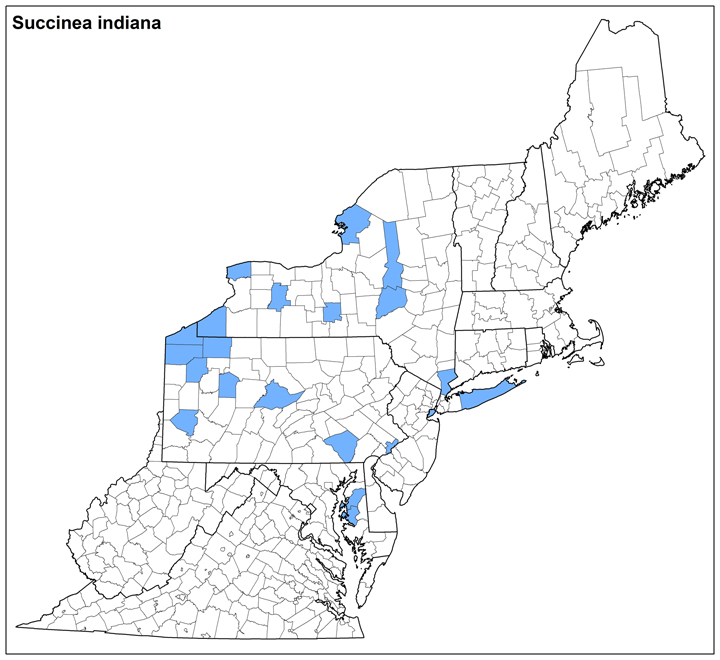Land Snails

Photos: Image not available at this time
Succinea indiana Pilsbry, 1905
Family: Succineidae
Common name: Xeric Ambersnail
Identification
Width: 6-7 mm
Height: 10-11 mm
Whorls: 3.5
The shell is very thin, roundly ovate, and yellow-brown with a reddish apex. Minute growth lines and wrinkles are present. The whorls are very convex with the last one inflated. The aperture is 7-8 mm in length, and its lower lip is arced or slightly flat (Pilsbry, 1905, 1948). The animal’s mantle is plain dark gray (Hubricht, 1958). The genus Succinea has a swollen genital opening (Pilsbry, 1948).
Dissection may be necessary to identify succineid species. Hubricht (1958) notes that the penis of S. indiana is like that of S. campestris, which is to say, the penis appears to be wide but actually consists of a thick sheath around a thin penis (Pilsbry, 1948). No penial appendix is present.
Note that Succineidae show a great deal of intraspecific variation in size and proportions, both within and between sites (Pilsbry, 1948).
Ecology
The snail occupies dry, sunny ground (Hubricht, 1985). Its type locality is a grassy hillside (Hubricht, 1958). Little is known about its ecology.
Taxonomy
Succinea vaginacontorta is a synonym.
Distribution
The snail is widely distributed across the eastern half of the US, with populations scattered as far west as the Dakotas and Oklahoma, south to Florida, and north to Maine and Ontario, Canada. In the northeastern US, records include Delaware, Maine, Maryland (Queen Annes and Talbot Counties), New Jersey, and counties throughout New York and Pennsylvania. Hubricht (1985) considers S. indiana’s range incompletely known because it is only identifiable through dissection.
Conservation
NatureServe Global Rank: G5, Globally Secure.
Megan Paustian 10/2017
Range Map (Click to Enlarge)


